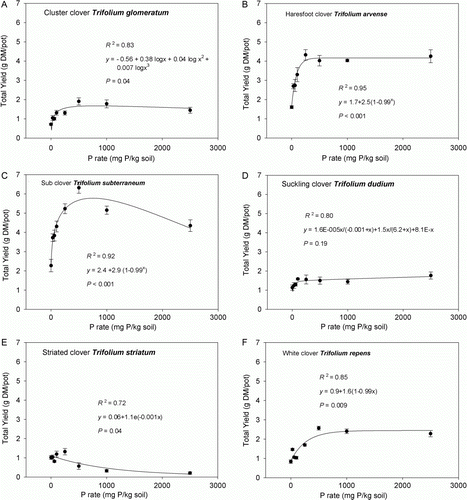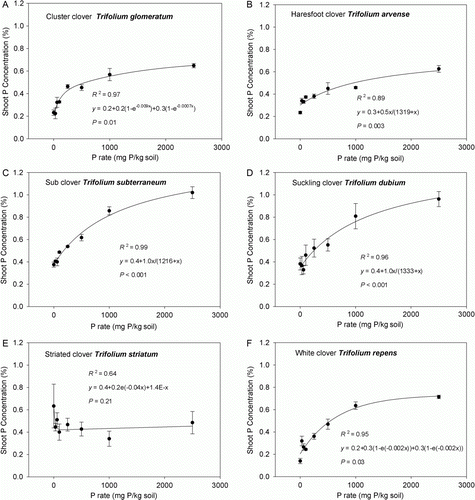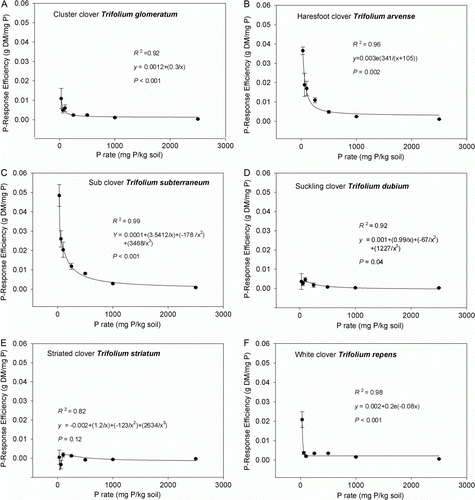Figures & data
Table 1 . Initial fertility status of a high country Allophanic Brown soil used in the glasshouse experiment. Topsoil sample (0–75 mm) was collected from a mid-altitude (740 m) central South Island, New Zealand high country site in June 2008.
Table 2 . Values of total accumulated shoot yield, P concentration and P uptake by six pasture legume species, grown under glasshouse conditions in a New Zealand high country soil supplied with increasing rates of P (eight levels of P; increasing from 0 to 2500 mg P kg−1 soil) and Olsen P values of soil in which plants were grown.
Figure 1. Total accumulated shoot dry matter (DM) yield response of pasture legume species—A, Trifolium glomeratum; B, T. arvense; C, T. subterraneum; D, T. dubium; E, T. striatum; and F, T. repens—to increasing levels of soil phosphorus (eight levels of P; ranging from 0 to 2500 mg P kg−1 soil), grown in a New Zealand high country soil. Data are mean values ± SEM (n =4), with R 2 and P values for fitted curve showing data trend.

Table 3 . Rate of P application and shoot P concentration at which 95% maximum yield was observed for the pasture legume species.
Figure 2. Comparison of shoot P concentration of pasture legume species—A, T. glomeratum; B, T. arvense; C, T. subterraneum; D, T. dubium; E, T. striatum; and F, T. repens—grown in a New Zealand high country soil supplied with increasing levels of soil phosphorus (eight levels of P; ranging from 0 to 2500 mg P kg−1 soil). Data are mean values ± SEM (n =4), with R 2 and P values for fitted curve showing data trend.

Figure 3. Comparison of P-response efficiency of pasture legume species—A, T. glomeratum; B, T. arvense; C, T. subterraneum; D, T. dubium; E, T. striatum; and F, T. repens—grown in a New Zealand high country soil supplied with increasing levels of soil phosphorus (eight levels of P; ranging from 0 to 2500 mg P kg−1 soil). Data are mean values ± SEM (n =4), with R 2 and P values for fitted curve showing data trend.
